Ever notice how many electric motor frames there are? Do you wonder why there are so many frames in the electric motor industry? Well, the National Electrical Manufacturers Association (NEMA) came up with all of these frame dimensions, and believe it or not, they all have a very particular scenario in which they are used. In this article, Heartland Motors will cover the different sizes of electric motor frames. We’ll also cover the different dimensions and NEMA designations.
What is an Electric Motor Frame?
An electric motor frame refers to the main structural components that provide support and housing for the internal parts of an electric motor. The key elements of an electric motor frame typically include:
- End Brackets/End Bells – These caps on each end of the motor house the bearings that support the motor shaft. They are usually made of cast iron or aluminum.
- Stator Frame/Yoke – This is the main body surrounding the stator or stationary electromagnets. It is usually made of laminated steel and provides a magnetic circuit as well as mechanical support.
- Feet/Mounting Flange – Used to attach the motor to a mounting surface. May be integrated with the end brackets or stator frame.
- Cooling Fan Cover – A cover for the cooling fan, if present. Usually made of aluminum.
- Accessories Plate – A plate on the non-drive end that may support a terminal box, capacitors, encoders etc.
The frame holds all the internal components like the stator, rotor, bearings etc. in alignment and absorbs forces during motor operation. The strength and rigidity of the frame is important for smooth operation.
The materials used, construction and protective coatings/treatments also depend on the motor type and application.
How Are Motor Frames Configured?
The motor frame is designed and selected based on the size, power, speed, and application requirements of the motor. Frame dimensions often comply with standards by organizations, like NEMA.
Higher power/torque requires larger frames to accommodate larger components and provide greater mechanical strength. Standard frame sizes (ie: NEMA frames) are matched to power ratings. Higher speeds require stronger frames to handle greater centrifugal forces.
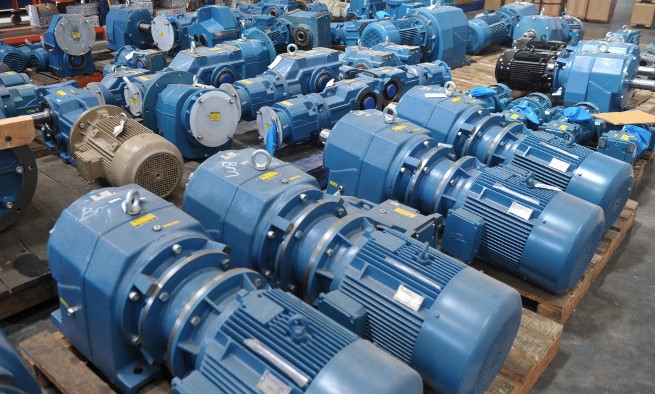
Frames are designed differently based on the cooling method (e.g. totally enclosed vs fan cooled). Cooling airflow, space for cooling fins, fan mounts, etc. are considered.
Different mounting arrangements like face/foot mounting or flange mounting necessitate different frame designs and foot styles.
Weatherproof, waterproof, explosion-proof motors require specially designed enclosed frames. Size and shape limitations of the application can dictate frame design.
Engineers select or design optimal frame configurations based on the specs and operating conditions of each motor application. Extensive analysis goes into frame design to provide the necessary structural integrity, cooling, and standards compliance.
How Do I Tell What Frame Size a Motor Has?
The frame size of large electric motors is denoted by a three-digit code along with a letter representing the frame type. The first two digits indicate the shaft height in quarters of an inch. For example, a shaft height of 12 would be denoted by the digits 12.
The third digit specifies the distance between the mounting bolt holes in the base, measured in inches. A higher third digit corresponds to a longer motor body and greater distance between mounting holes.
The letter at the end identifies the frame type – for example NEMA frame types A, B, C, etc. Each frame type has set dimensions for components like end brackets, feet, and shaft height in relation to the overall frame size.
A frame size of 140C would indicate a shaft height of 14 inches (56 quarters) and a distance of 10 inches between mounting holes, with a NEMA C-type frame. This systematic motor frame designation provides standardized dimensions to facilitate interchangeability between different manufacturers.
Determining a Motor Frame Size
While the frame is usually selected based on catalogs, custom frame design calculations may be required for specialty motors. Finite element analysis is often used by manufacturers to optimize frame designs. Here is a formula that NEMA came out with in 1984 to help calculate frame size:
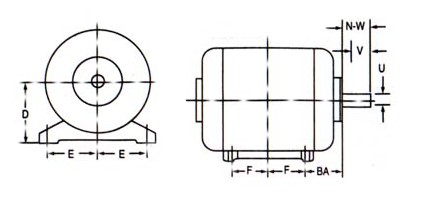
There are no universal formulas to precisely determine electric motor frame sizes, since frame dimensions and design details vary significantly between different motor types, manufacturers, and standards organizations.
NEMA Frame Dimensions Chart
Below you’ll find a chart directly from NEMA. This is a motor frame dimensions chart that goes from frame designation 42 all the way to 369AT. There are four different images that make up this chart. Click on the appropriate image to increase the size of it.
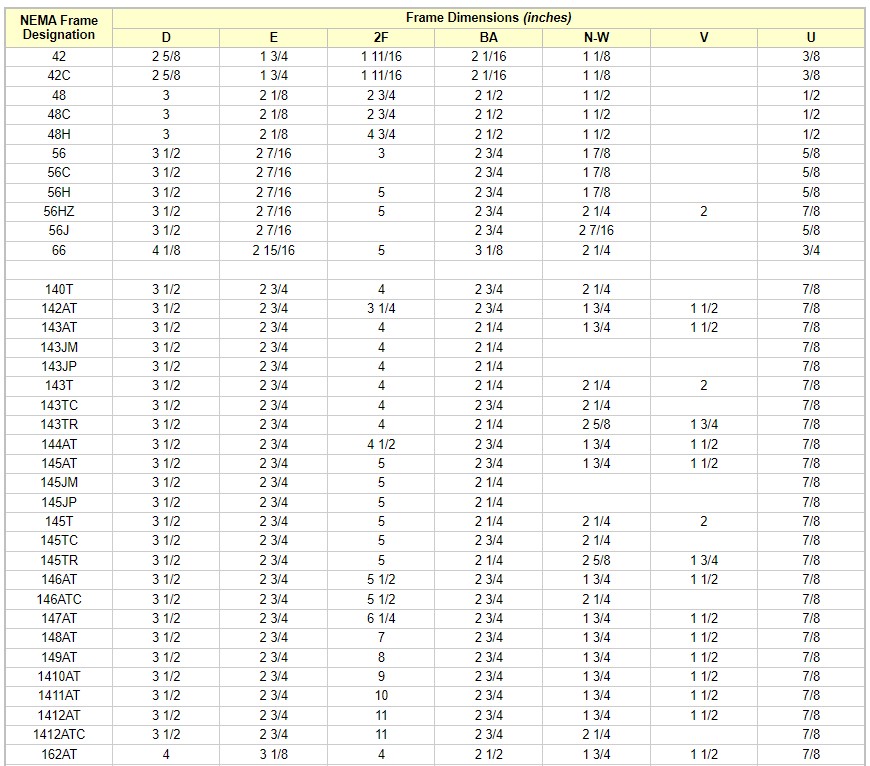
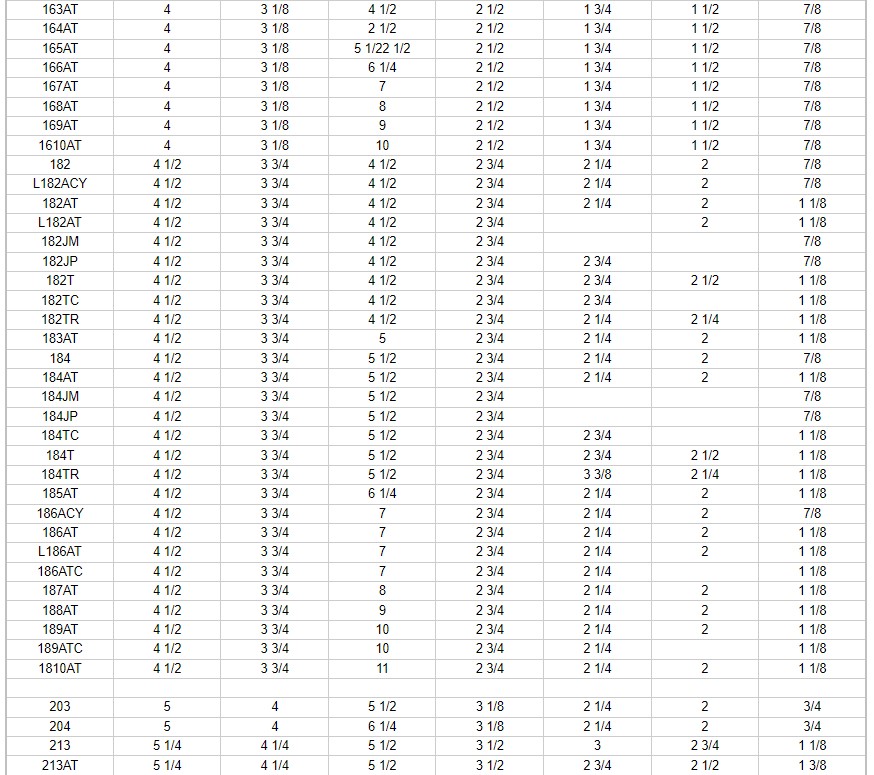
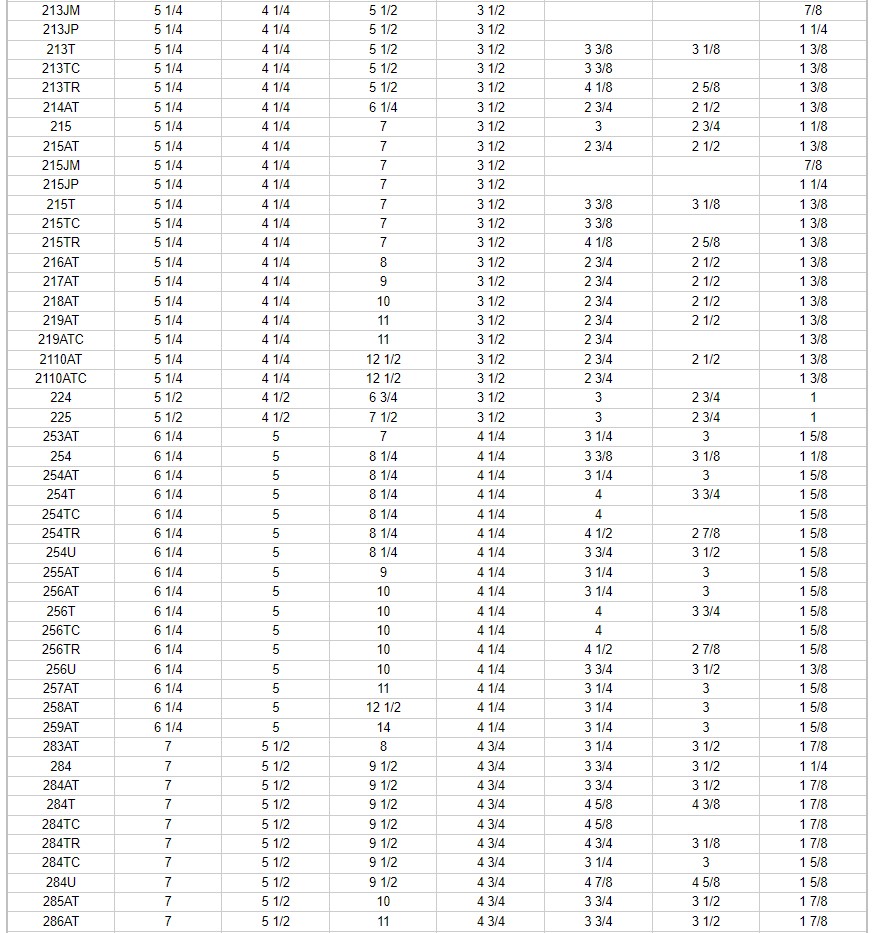
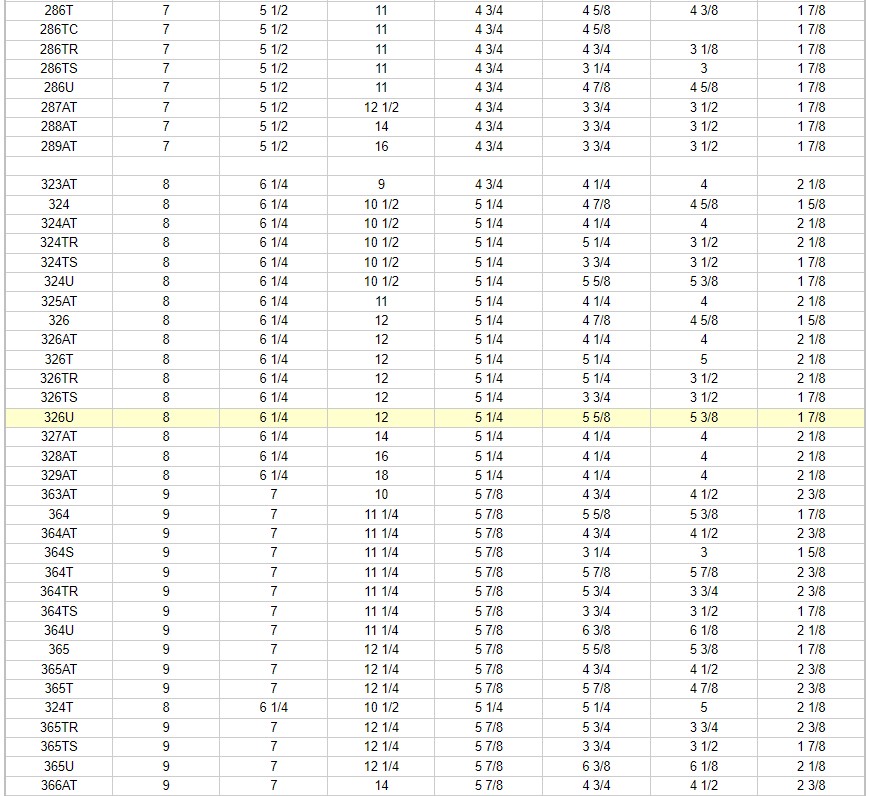

Common Questions About Electric Motor Frames
In this section, we will explore common questions related to properly sizing and interpreting electric motor frame dimensions and codes. The questions and answers provide an overview of how shaft height, mounting holes, frame types, cooling requirements, and performance specifications factor into frame selection.
They also touch on the standards, materials, and analysis methods relevant to frame design. Whether you are choosing between manufacturer frame sizes or involved in custom frame design, understanding these key considerations will lead to specifying an electric motor frame tailored to the application.
What do the numbers in a motor frame size represent?
The first two digits indicate shaft height in inches. The third digit indicates distance between mounting holes.
What does the letter in a frame size stand for?
It indicates the frame type, like NEMA A, B, C frames.
How do you determine the proper frame size for an application?
Match required motor power, torque, speed, and mounting method to standard frame sizes.
What affects the frame size needed for a motor?
Power rating, torque, speed, cooling method, and environmental factors.
Do larger motors always have bigger frames?
Yes, larger frames are needed to support bigger internal components and greater forces.
How is cooling accounted for in frame size?
Enclosed motors need larger frames than open motors for the same power to allow cooling airflow.
What is the main function of the motor frame?
It provides structural support, houses internal parts, and enables mounting.
Are frame dimensions standardized?
Many comply with NEMA, IEC or other standards for interchangeability.
Does frame material affect sizing?
No, but material strength affects allowed loads and fatigue life.
What analysis is used to design frames?
Engineers often use finite element analysis to optimize motor frame designs.
Summary – Different Frame Types For Industrial Electric Motors
As you can see, there are a ton of different frame designations for the different types of electric motors on the market. They all usually correspond with the size of the motor, the conditions the motors are operating in, the power of the motor, and the cooling method. NEMA set the designations for a vast majority of motors, and you can reference the chart in this article to see the appropriate designation.
At Heartland Motors, we are here to not only sell you large, industrial electric motors, but help educate you on different things that have to do with these motors. Feel free to check out more articles in our motors blog.
